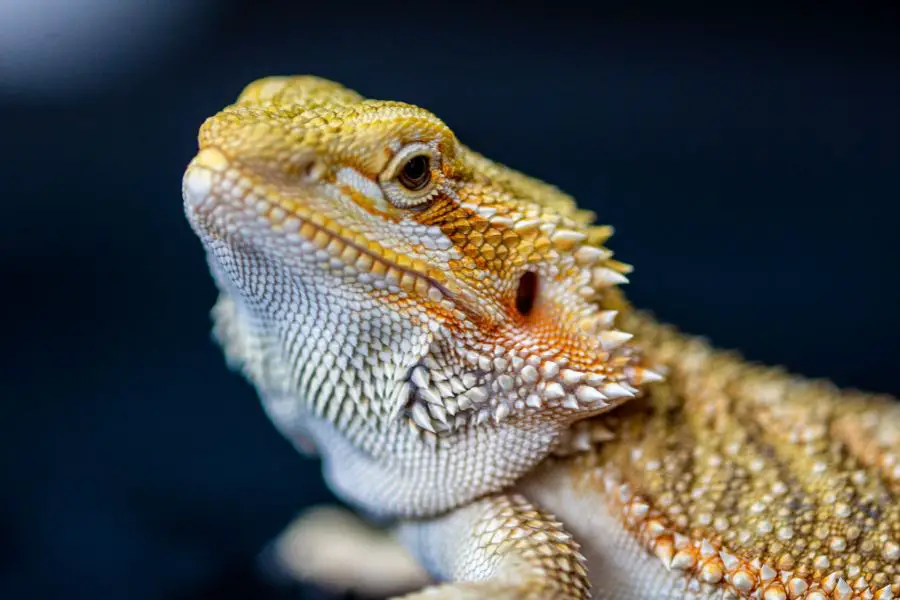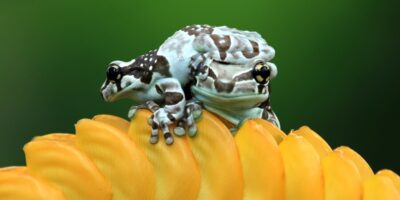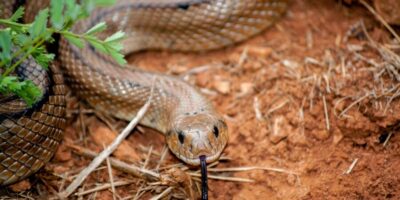When a bearded dragon turns white, it can be an indication of several things. One possibility is that they are shedding their skin. During the shedding process, their old skin may appear white or pale before it eventually comes off. Another reason could be stress. Bearded dragons sometimes change color when they are stressed or feeling threatened. It’s their way of camouflaging or showing their discomfort.
Lastly, if your bearded dragon’s color change is accompanied by other concerning symptoms like loss of appetite or lethargy, it could be a sign of an underlying health issue. In such cases, it’s always best to consult a reptile veterinarian for a proper diagnosis and guidance.
Shedding Process
Bearded dragons go through a shedding process called ecdysis, where they periodically shed their old skin to allow for growth. Before shedding, their old skin may appear white or pale. This is because the outer layer of skin becomes dry and loosens, preparing to come off. The new skin underneath is fresh and vibrant. Shedding is a natural and necessary process for bearded dragons to maintain healthy skin and growth.
The color change that occurs in bearded dragons before shedding is completely natural and normal. It’s a part of their natural growth and development process. As their skin prepares to shed, the old skin may appear white or pale. This is simply a sign that the shedding process is about to take place.
It’s important to remember that this color change is temporary and that the new skin underneath will be vibrant and healthy. So, there’s no need to worry when you notice your bearded dragon turning white before shedding. III. Stress and Color Change
Bearded dragons have a fascinating ability to change color when they’re stressed or feeling threatened. This color change serves as a defense mechanism that helps them either blend in with their surroundings or communicate their discomfort.
When they feel threatened, they may darken their color to appear more intimidating or to signal that they’re not in the mood for interaction. On the other hand, if they’re trying to blend in and hide, they may lighten their color to match their environment. It’s their way of expressing their emotions and adapting to their surroundings.
Common stressors
Several common stressors can affect bearded dragons. Some of these include:
Inadequate habitat: Bearded dragons need a spacious and properly set up enclosure with the right temperature, lighting, and humidity levels. A cramped or poorly maintained habitat can cause stress.
- Incorrect temperature: Bearded dragons are ectothermic, meaning they rely on external heat sources to regulate their body temperature. If the temperature in their habitat is too hot or too cold, it can stress them out.
- Inconsistent lighting: Bearded dragons require a proper light cycle with both UVB and UVA lighting. Inadequate or inconsistent lighting can disrupt their natural behavior and impact their well-being.
- Handling and socialization: While bearded dragons can enjoy gentle handling, excessive or rough handling can stress them out. They also need proper socialization to feel comfortable around humans and other animals.
- Poor diet or feeding habits: Inadequate nutrition, improper feeding schedules, or a lack of variety in their diet can lead to stress and health issues in bearded dragons.
Other Health Considerations
While color change in bearded dragons can be a normal response to stress or threat, it’s also important to consider that it can sometimes be a sign of an underlying health issue. Color changes that are persistent, extreme, or accompanied by other concerning symptoms may indicate a health problem that requires attention. It’s always a good idea to monitor your bearded dragon’s overall health and behavior, and if you notice any significant or worrisome changes in their color, it’s best to consult with a reptile veterinarian who can provide proper care and guidance.
When it comes to stress and color changes in bearded dragons, there can be a connection. Just like us humans, bearded dragons can also experience stress and anxiety, which may manifest in changes to their coloration. When they are stressed or feeling threatened, they might darken their color or display darker patches on their body. On the other hand, when they are calm and comfortable, their colors may appear brighter and more vibrant. It’s important to create a calm and secure environment for them, with proper temperature, lighting, and habitat setup, to help reduce stress levels.
In addition to monitoring color changes, it’s crucial to keep an eye on other symptoms like appetite and behavior. If your bearded dragon is experiencing any health issues, you may notice a decrease in appetite, lethargy, changes in stool consistency, or other abnormal behaviors. These can be important indicators of their overall well-being. By observing and noting any changes in their eating habits, activity levels, and overall behavior, you can provide valuable information to a reptile veterinarian who can help diagnose and treat any underlying health issues.
Health issues
Bearded dragons can experience a range of health issues. Some common ones include respiratory infections, parasites (such as mites or worms), metabolic bone disease, impaction (caused by ingesting substrate or foreign objects), and shedding problems. It’s important to provide them with a proper diet, maintain a clean and suitable habitat, and regularly monitor their health to catch any issues early. If you notice any concerning symptoms or changes in behavior, it’s always best to consult with a reptile veterinarian who can provide the necessary care and treatment.
When it comes to respiratory infections in bearded dragons, there are a few signs to watch out for. These can include wheezing or crackling sounds when they breathe, excessive mucus or discharge from the nose or mouth, open-mouth breathing, coughing, and lethargy. If you notice any of these symptoms or any other concerning changes in your bearded dragon’s behavior, it’s best to consult with a reptile veterinarian. They can provide a proper diagnosis and recommend the appropriate treatment to help your scaly friend feel better.
Conclusion
Observing and understanding color changes in bearded dragons is indeed important. It can provide valuable insights into their health, mood, and overall well-being. We discussed various health issues that bearded dragons may face, such as respiratory infections, and how to prevent them by maintaining a clean habitat with proper temperature and humidity levels. We also touched upon the fascinating ability of bearded dragons to regrow their tails through a process called caudal autotomy.
However, it’s worth noting that the regrown tail may not be as long or vibrant in color as the original. Lastly, we talked about the importance of creating a calm and secure environment for bearded dragons to help reduce stress levels and prevent shaking.




